.jpg)
DRY EYE

Dry eyes can happen when tears evaporate too quickly, or if the eyes produce too few tears. It is common in humans and in some animals. It can affect one or both eyes, and it can lead to inflammation.
Dry eye syndrome can occur at any age, and in people who are otherwise healthy. It is more common with older age, when the individual produces fewer tears. It is also more common in women than in men.
It is more common in places where malnutrition results in a vitamin A deficiency.
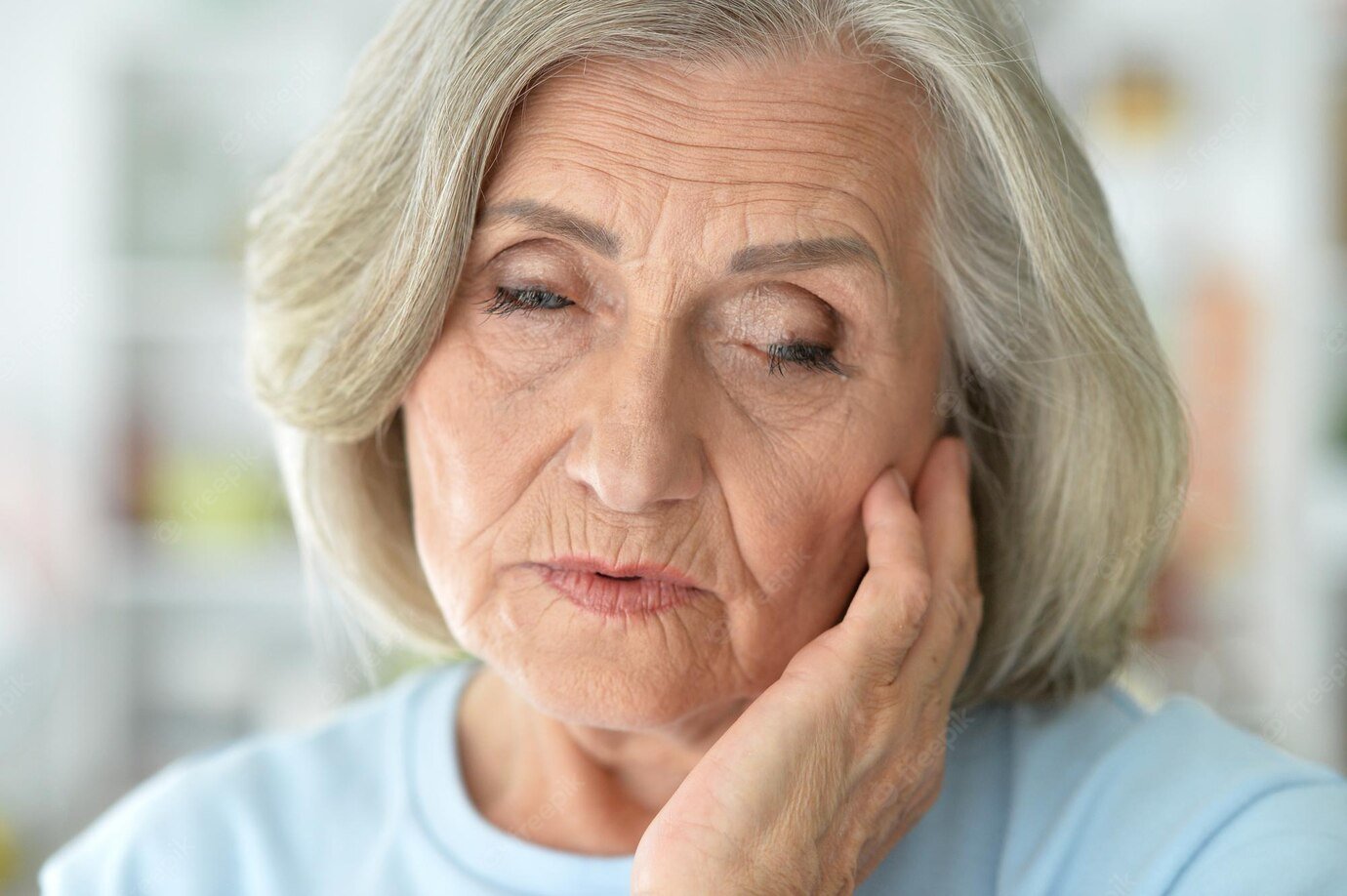


• Age. Dry eyes are a part of the natural aging process. The majority of people over age 65 experience some symptoms of dry eyes.
• Gender. Women are more likely to develop dry eyes due to hormonal changes caused by pregnancy, the use of oral contraceptives and menopause.
• Medications. Certain medicines, including antihistamines, decongestants, blood pressure medications, and antidepressants, can reduce tear production.
• Medical conditions. People with rheumatoid arthritis, diabetes, and thyroid problems are more likely to have symptoms of dry eyes. Also, problems with inflammation of the eyelids (blepharitis), inflammation of the surfaces of the eye, or the inward or outward turning of eyelids can cause dry eyes to develop.
• Environmental conditions. Exposure to smoke, wind and dry climates can increase tear evaporation resulting in dry eye symptoms. Failure to blink regularly, such as when staring at a computer screen for long periods of time, can also contribute to drying of the eyes.
• Other factors. Long-term use of contact lenses can be a factor in the development of dry eyes. Refractive eye surgeries, such as LASIK, can decrease tear production and contribute to dry eyes.
Advanced dry eyes may damage the front surface of the eye and impair vision.
Some people find the pain very strong, and this can lead to frustration, anxiety, and difficulty functioning in daily life.
Complications may include a worsening of eye redness and light sensitivity, increasing painful eyes, and deterioration of eyesight.
SYMPTOMS OF DRY EYE
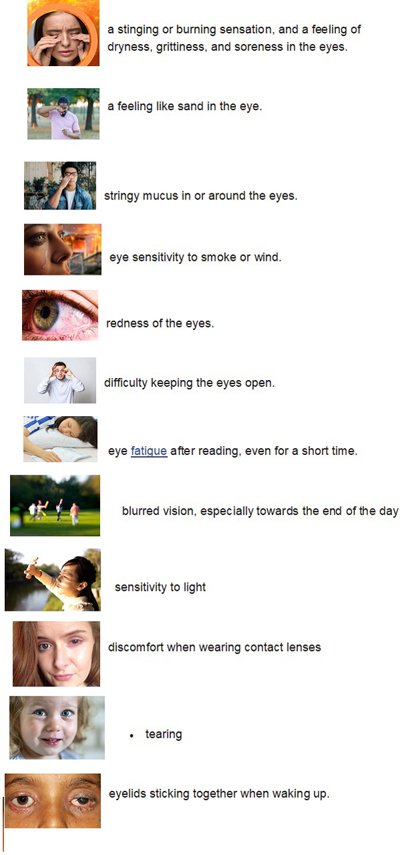
Imbalance in the tear mixture:
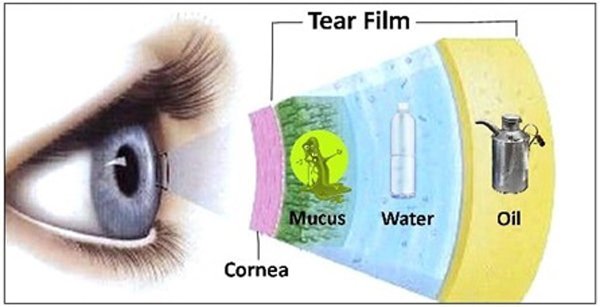
The tear film has three layers, oil, water, and mucus. Problems with any of these can lead to dry eye symptoms.
The top layer, oil, comes from the edges of the eyelids, where the meibomian glands produce lipids, or fatty oils. The oil smooths the tear surface and slows down the rate of evaporation. Faulty oil levels can cause the tears to evaporate too quickly.
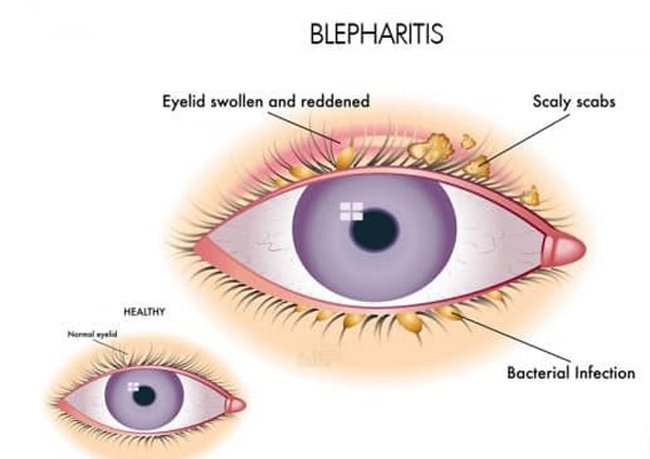
-> Inflammation along the edge of the eyelids, known as blepharitis, and some other skin disorders, can cause the meibomian glands to become blocked, making dry eyes more likely.
-> The middle layer is the thickest, consisting of water and salt. The lacrimal glands, or tear glands, produce this layer. They cleanse the eyes and wash away particles and irritants.
-> Problems with this layer can lead to film instability. If the water layer is too thin, the oil and mucus layers may touch each other, resulting in a stringy discharge, a hallmark sign of dry eyes.
-> The inner layer, mucus, enables the tears to spread evenly over the eyes. A malfunction can lead to dry patches on the cornea, the front surface of the eye.
Contact Lenses and Dry Eye:
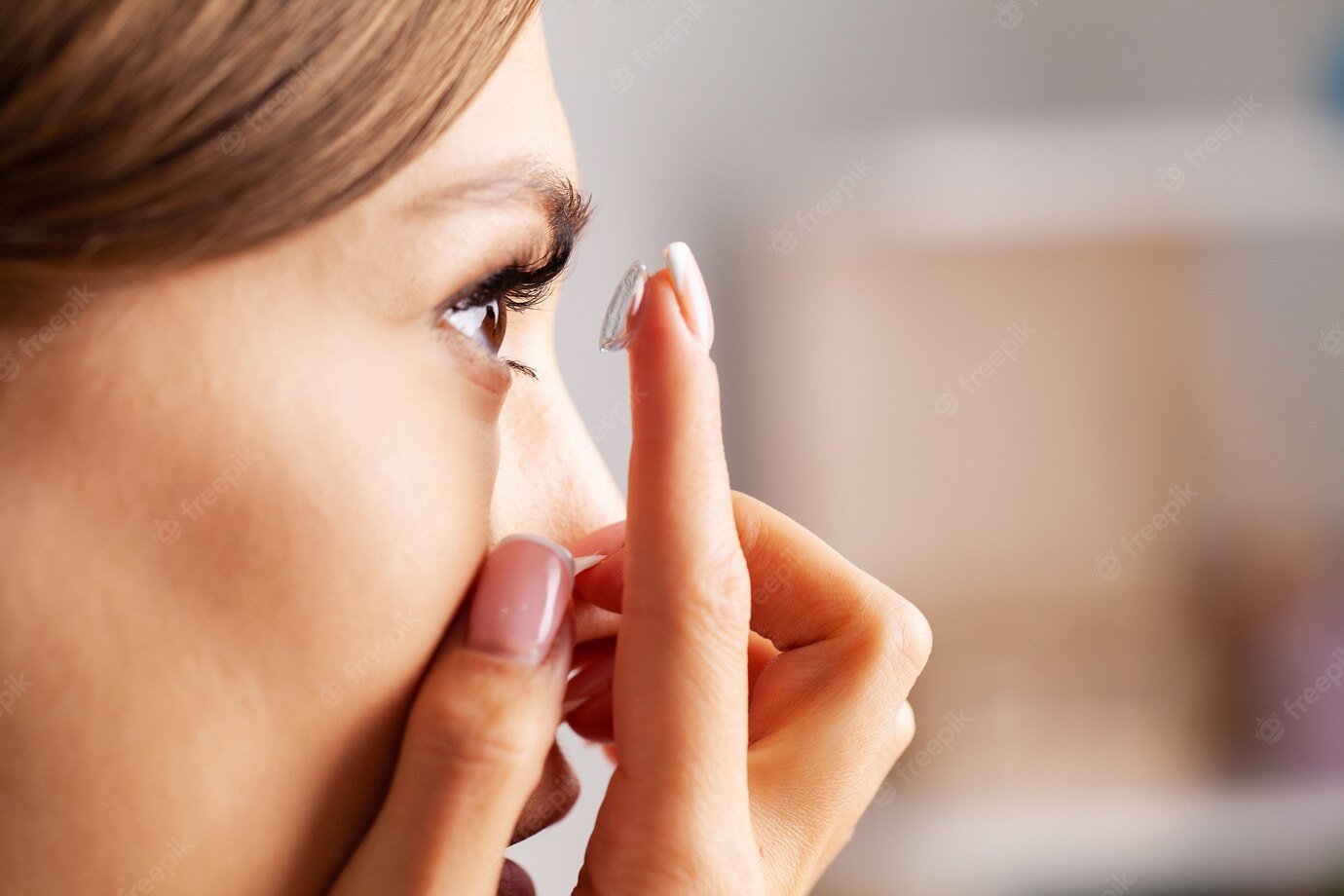
-> With regard to contact lenses, dry eyes doesn't mean that you're no longer a candidate for contacts. But you’ll need to have a conversation with your doctor about dryness, and then choose a lens that’s comfortable to wear with this condition, such as single-use daily disposable lenses.
-> The best contacts for dry eyes are soft lenses, as well as lenses with a low-water content, such as those made from silicone hydrogel.
Diagnosis and test:
1. Visual Acuity Tests:

This test checks to see how well you can read letters or symbols from 20 feet away, while covering one eye at a time.
2. Slit Lamp Examination:
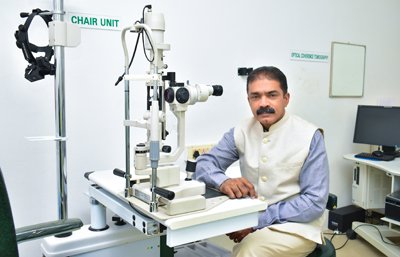
A slit lamp is a microscope with a bright light used during an eye exam. It gives your ophthalmologist a closer look at the different structures at the front of the eye and inside the eye. It’s a key tool in determining the health of your eyes and detecting eye disease.This is done to detect any external changes in the eye.
What is the Schirmer’s test?
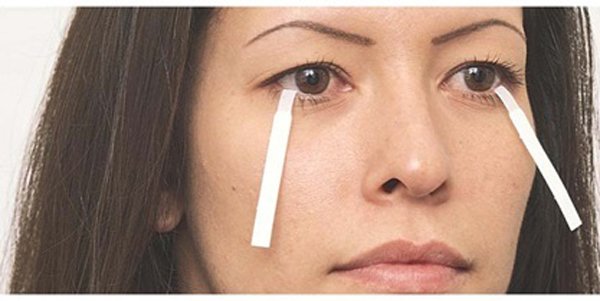
The Shirmers test is used to check the amount of tears in your eyes.
Why is the test used?
The Schirmer’s test confirms and determines the severity of dry eye. Symptoms of dry eye include the following:
• excessive dryness in the eye
• persistent watering or tearing of the eye
• pain in the eye area
• feeling of something being in the eye
• chronic eye irritation
• sensitivity to light
The Schirmer’s test may also be used to help diagnose Sjögren’s syndrome. This is an autoimmune disorder that causes decreased function in the eye and salivary glands, resulting in dry eyes and mouth.
In these cases, the Schirmer’s test is often used in conjunction with other tests to determine if Sjögren’s is present.
Mebimobian Glands:
2.jpg)
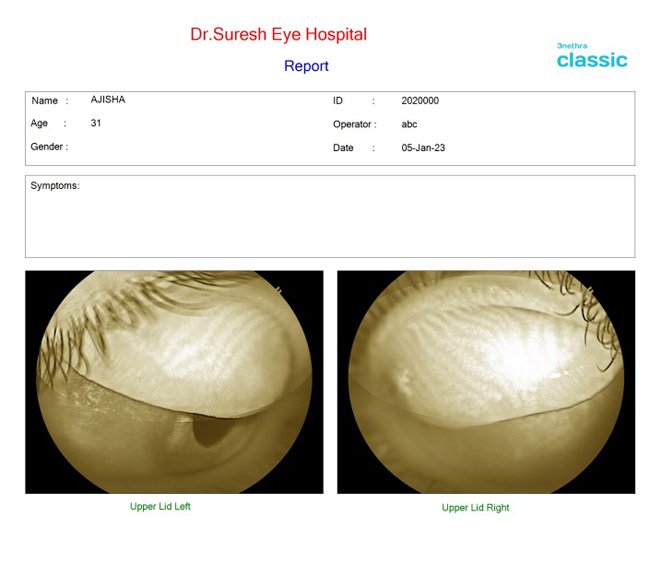
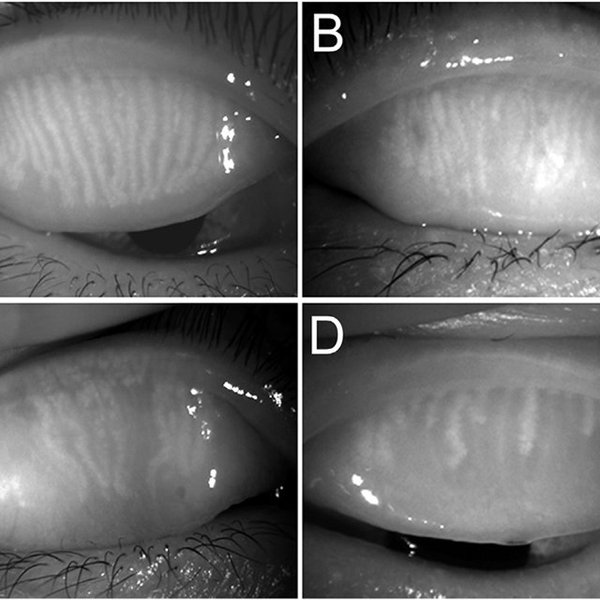
(3 nethra FUNDUS & Anterior Segment Camera).
- Dr. Suresh Eye Hospital
This imaging tool is used to detect meibomian gland activity.
TO KNOW MORE DETAILS ABOUT MEIBOMIAN GLAND PLEASE CLICK HERE: MEIBOMIAN GLAND
Laser for dry eyes:
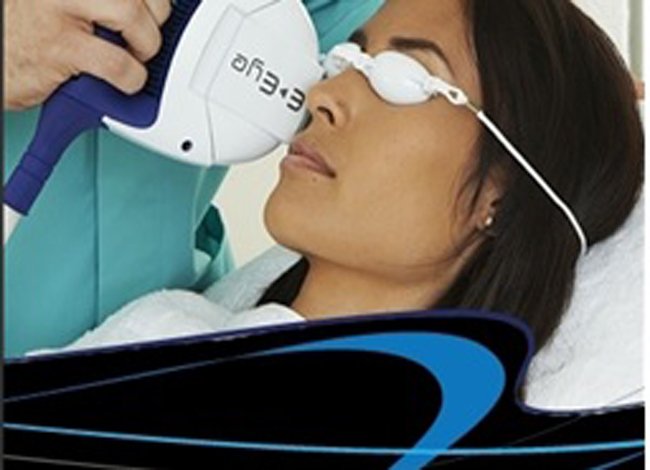
Until recently, the only ‘treatment’ was lubricating eye drops. But all they do is provide very short term relief.
Now there’s a proven, painless and effective treatment that really makes a long term difference (intense pulsed light) therapy. Just 3-4 treatments over a period of 6 weeks made a significant improvement in 86% of eyes treated in a recent study in New Zealand.
Treatment:
Three ways of keeping the eyes lubricated are:
• making the most of natural tears
• using artificial tears or eye drops
• reducing tear drainage
Tear Substitutes:
a) Short duration tear substitutes:
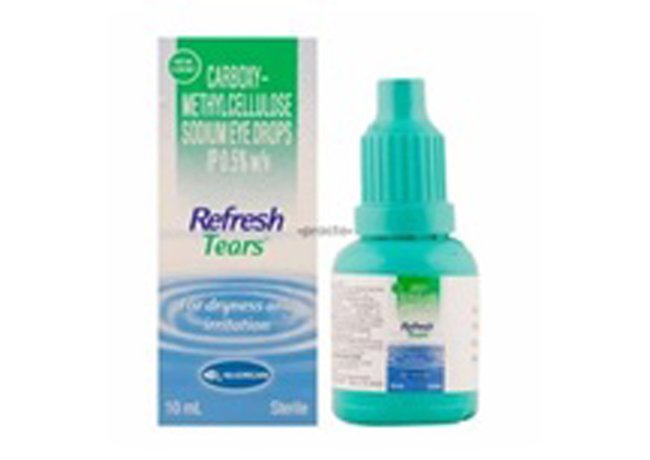
These are useful for 4 hours only.
b) Medium duration tear substitutes (Liquigel):
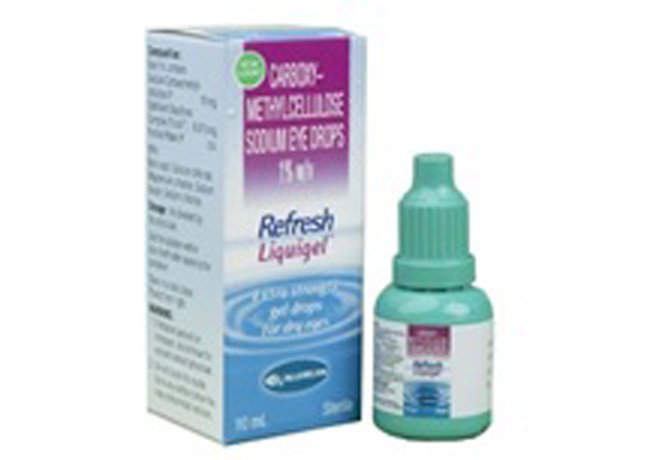
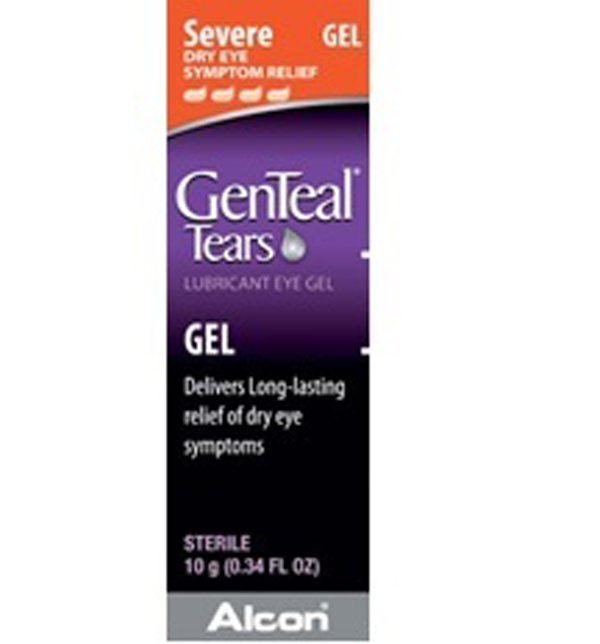
• Adding tears. Mild cases of dry eyes can often be managed using over-the-counter artificial tear solutions. These can be used as often as needed to supplement natural tear production. Preservative-free artificial tear solutions are recommended because they contain fewer additives, which can further irritate the eyes. People with dry eyes that don't respond to artificial tears alone will need to take additional steps to treat their dry eyes.
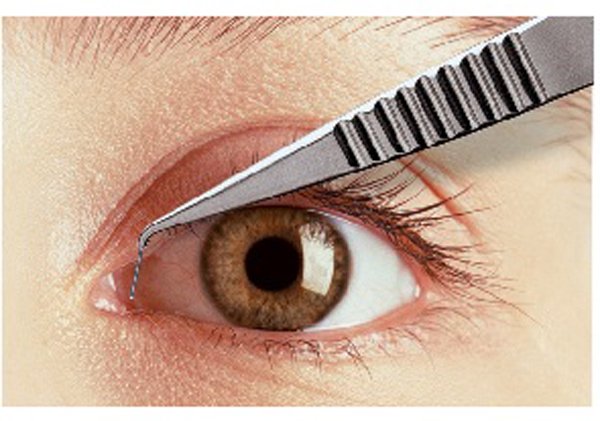
• Conserving tears. Keeping natural tears in the eyes longer can reduce the symptoms of dry eyes. This can be done by blocking the tear ducts through which the tears normally drain. The tear ducts can be blocked with tiny silicone or gel-like plugs that can be removed if needed. Or a surgical procedure can permanently close the tear ducts. In either case, the goal is to keep the available tears in the eye longer to reduce problems related to dry eyes.
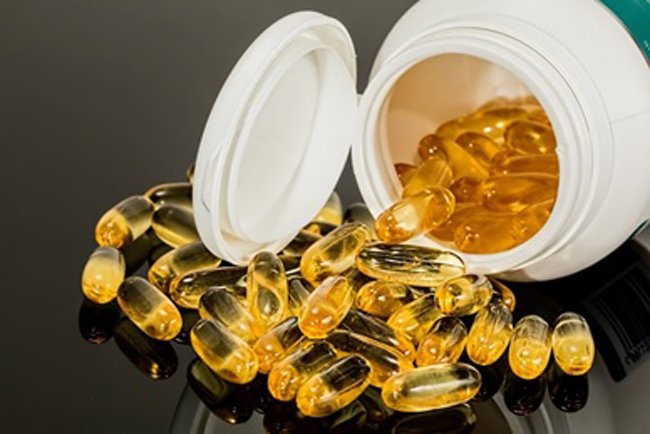
• Increasing tear production. Eye doctor can prescribe eye drops that increase tear production. Taking an omega-3 fatty acid nutritional supplement may also help.
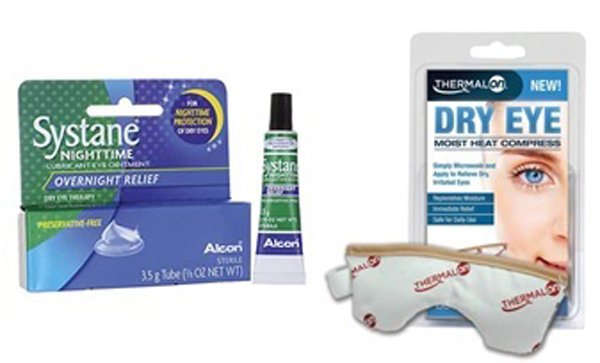
• Treating the contributing eyelid or ocular surface inflammation. Eye doctor might recommend prescription eye drops or ointments, warm compresses and lid massage, or eyelid cleaners to help decrease inflammation around the surface of the eyes.
Surgery:
Eyelid problems, such as an incomplete blink, may be treated by an oculoplastic surgeon, who specializes in eyelid problems.
In more severe cases, tear ducts, which drain away the tears, may be deliberately blocked, partially or completely, to conserve tears. Silicone plugs can be placed in the tear ducts to block them. This helps keep both natural and artificial tears on the eyes for longer.

Eye surgery can correct some problems that lead to dry eye.
2. A surgeon can shrink the tissues of the drainage area by using a heated wire in a minor operation known as thermal cautery.
3. A Scleral Lens is a contact lens that rests on the sclera, the white part of the eye. It creates a fluid-filled layer over the cornea, preventing it from drying out.
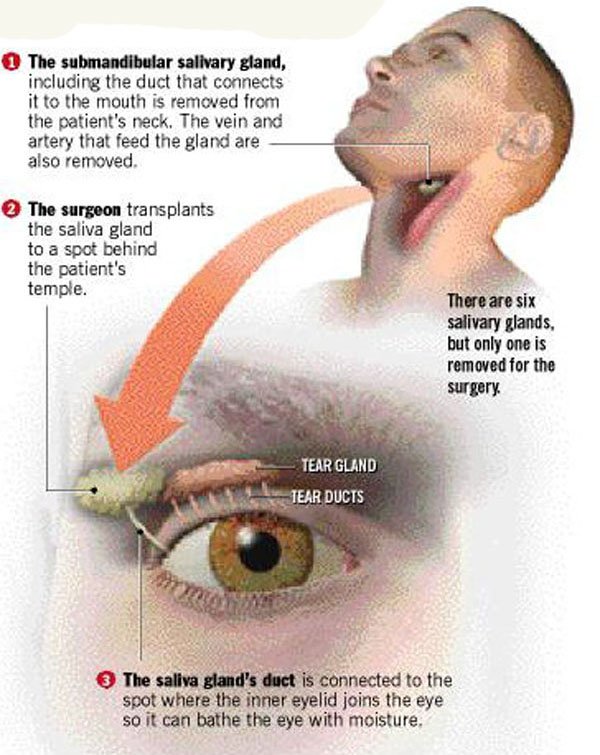
4. Salivary gland transplantation is a surgical procedure that is occasionally considered in persistent and severe cases that have not responded to other treatments.
Some of the salivary glands are removed from the lower lip and grafted, or placed into the side of the eyes. The saliva they produce becomes a substitute for tears.
Home remedies:
Various home remedies can help relieve dry eyes.
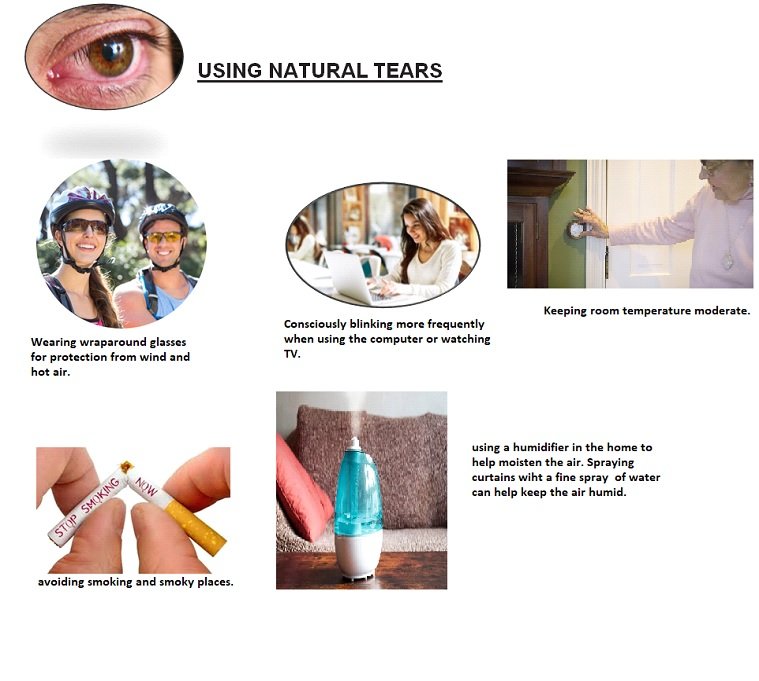
Moisture-chamber spectacles wrap around the eyes like goggles. They help retain moisture in the eyes and protect them from wind and other irritants. New, sporty designs have increased their popularity.
Cleaning and massaging the eyelids:
Other tips include:
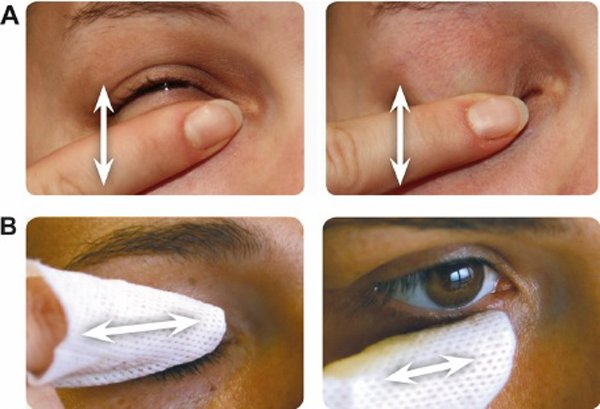
• Cleaning the eyelids by gently wiping the eyes with a piece of cotton wool dipped in warm water, to reduce the likelihood of them becoming inflamed
• Gently massaging the eyelid in a circular motion, using a clean finger, to help remove mucus from the eyelid glands
Dietary tips:

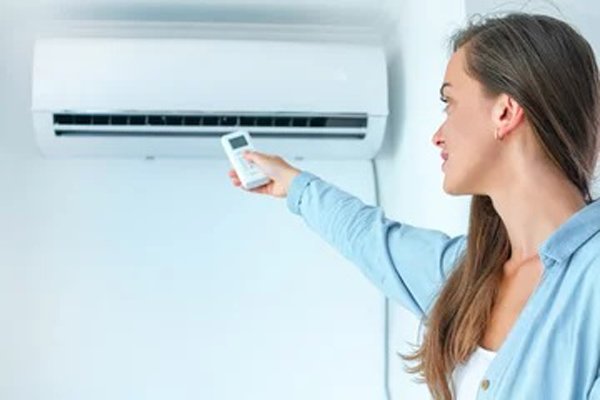

Complications:
Dry eye can lead to watery eye, as a different kind of tear tries to compensate.
Most people with mild dry eye syndrome have no long-term problems or complications, but severe symptoms can lead to eye inflammation, infection, and damage to the surface of the cornea.
This damage can lead to ulceration or scarring, which can be painful and affect the patient’s vision.
Conjunctivitis caused by dry eye does not normally require treatment, but if it is severe, long-lasting, or recurring, the patient should seek medical help.
Some people with dry eye syndrome sometimes have constantly watery eyes because they produce too many tears.
There are two types of tears, one that maintains the tear film and one that helps wash away dirt and foreign particles.
As a reaction to the irritation, people with dry eyes may produce more of the kind of tears that wash away dirt. This can lead to watery eyes.
QUESTION AND ANSWER:
(1) How do I know if I have dry eyes?
Symptoms:
.jpg)
1.jpg)
{{r.reply}}
Your comment was submitted for review. It will start display once it was approved by Admin
Comments